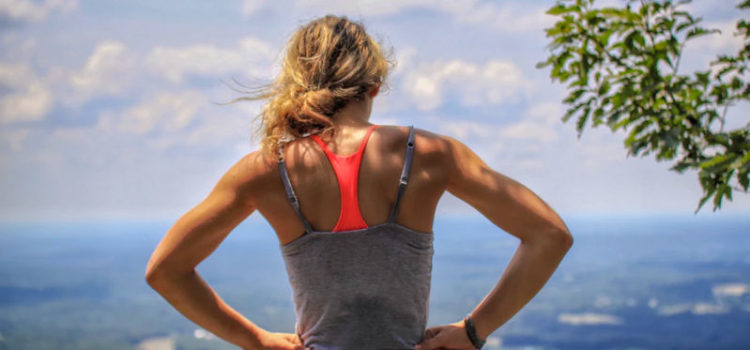

This article is an excerpt from the Shortform book guide to "The Oxygen Advantage" by Patrick McKeown. Shortform has the world's best summaries and analyses of books you should be reading.
Like this article? Sign up for a free trial here.
Why is proper breathing important for athletes? Why should people in fitness breathe less?
In the book The Oxygen Advantage, Patrick McKeown puts particular emphasis on the benefits of breathing less for athletes. He also outlines two advanced breathing exercises that athletes can use to enhance their performance.
Let’s look at how fitness breathing helps athletes during their workouts and on the field.
Benefit #1: Increased Physical Performance
Looking to improve your fitness? Breathing less results in vastly improved athletic performance, contends McKeown. The improved oxygenation of your muscles and organs caused by greater carbon dioxide tolerance is particularly impactful during exercise. In athletic training, the amount of oxygen your body can utilize in one minute during intense exertion is called VO2 max. Carbon dioxide tolerance has been shown to sharply increase VO2 max, resulting in vastly improved stamina.
(Shortform note: Aside from being a reflection of your physical stamina, VO2 max is a remarkably accurate predictor of how long you’ll live, according to some researchers. A 23-year-long study of 122,000 adults who were 53 years old on average found that every increase in VO2 max correlated with a statistically significant decrease in mortality from all causes. Most strikingly, the top 5% of participants were five times less likely to die than the bottom 25%. This is what we would expect to see if McKeown’s understanding is correct—if high VO2 max means you have more CO2 in your bloodstream at all times, it makes sense that you would reap the health benefits of increased oxygen flow at all times, not just during exercise.)
Benefit #2: Reduced Risk of Injury
McKeown contends that training your body to breathe less reduces your chance of injuring yourself by mitigating the damage done by free radicals. When your body uses up oxygen, it produces these unstable and potentially harmful molecules, which can damage various tissues in your body and greatly increase the risk of injury during exercise. This is called oxidative stress. Typically, your body has enough antioxidants from the food you eat to counteract free radicals. However, intense exercise can create more free radicals than your body is prepared for, increasing oxidative stress beyond manageable levels.
McKeown asserts that breathing less prompts your body to produce more antioxidants, which neutralize the free radicals. Additionally, by restricting yourself to nasal breathing, forcibly reducing the amount of oxygen you inhale, you ensure that you don’t exercise more intensely than your body is prepared for. This limits the number of unbalanced free radicals in your system.
(Shortform note: Although exercising more intensely than your body is ready for (and suffering from excessive oxidative stress) should be a concern, it’s arguably much less common than the opposite problem—not exercising enough. The US Department of Health and Human Services recommends a minimum of 150 minutes of moderate aerobic exercise per week, or 75 minutes of intense aerobic exercise per week. However, almost 80% of adults in the US fail to reach this benchmark.)
Breathing Exercises for Athletes
McKeown offers another set of exercises that athletes can use to take their performance to the next level. He also notes that anyone can practice them to further train their carbon dioxide tolerance and improve their fitness.
Exercise #1: Breath-Hold Warm-Up
First, McKeown recommends a pre-exercise warm-up that involves holding your breath to prepare your respiratory system for intense exercise in the near future. By holding your breath, you build up carbon dioxide in your blood rather than exhaling it. This prevents you from running out of carbon dioxide when the intense exertion makes you exhale more, meaning you can oxygenate your body more effectively for longer once you get going.
The exercise itself is essentially the same as the nose-unblocking exercise above, except you’ll be holding your breath for slightly longer and recovering for longer. Walk around, then exhale and hold your breath until you feel a strong need to breathe. Release and breathe normally through your nose for about a minute, then repeat. To warm up effectively, McKeown recommends doing this for 10 minutes before you start exercising.
Exercise #2: Breath-Hold Training
McKeown recommends an exercise for achieving peak athletic performance that involves first holding your breath for extended periods while walking. Then, after you’ve increased your tolerance for carbon dioxide significantly, you hold your breath while running (or performing some other form of intense cardio). Training while holding your breath like this replicates the experience of training at a high altitude, where the air is thinner and you naturally inhale less oxygen. As Olympic athletes have demonstrated for decades, high-altitude training improves physical performance by causing your body to produce more oxygen-carrying red blood cells in response to a low-oxygen environment.
To try this breath-hold training, start moving. Exhale and hold your breath until you feel a medium need to breathe. Then, release and breathe intentionally small breaths for 15 seconds. Finally, recover by breathing normally for 30 seconds, and repeat this eight to 10 times. Over the course of the exercise, increase the amount of time you hold your breath, waiting until you feel a powerful need to breathe to release. Once you’ve worked up to this exercise, do it once a day, McKeown recommends.

———End of Preview———
Like what you just read? Read the rest of the world's best book summary and analysis of Patrick McKeown's "The Oxygen Advantage" at Shortform.
Here's what you'll find in our full The Oxygen Advantage summary:
- How proper breathing can help you lose weight, sleep better, and more
- How modern living conditions cause people to breathe too much
- Training exercises to help you breathe less and build CO2 tolerance






